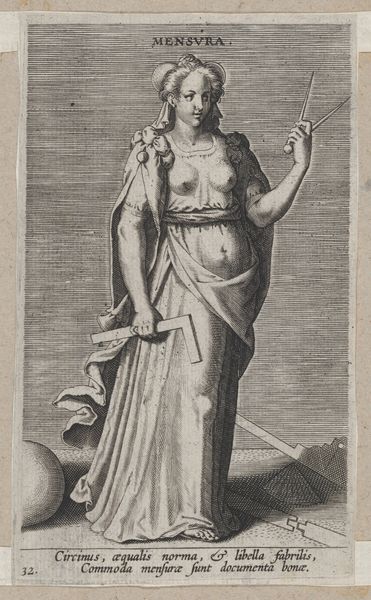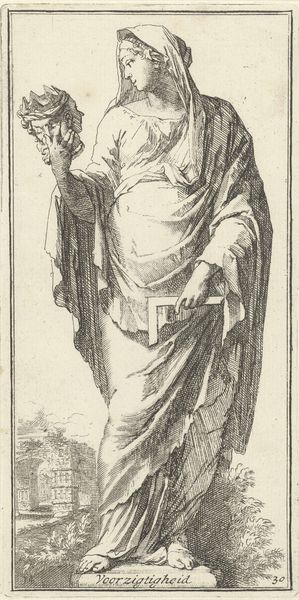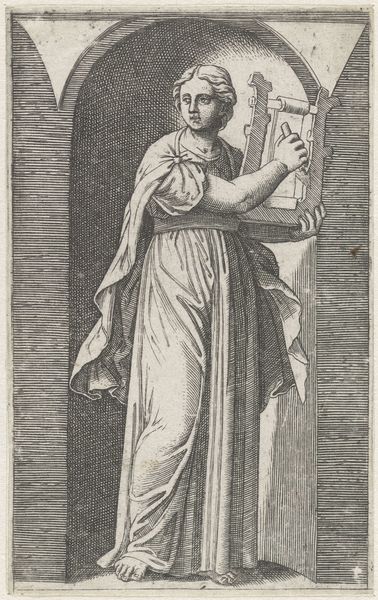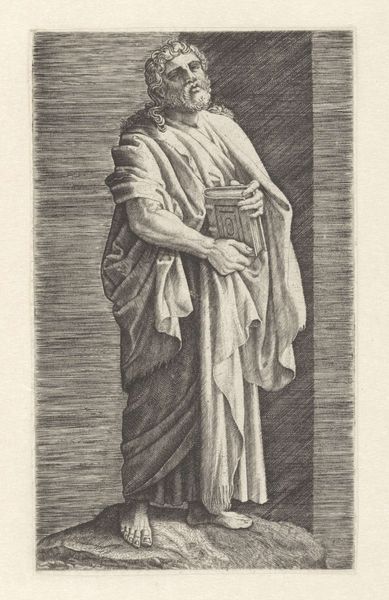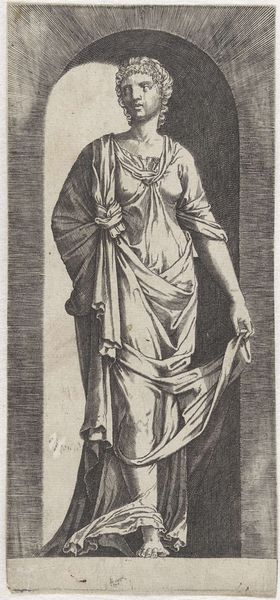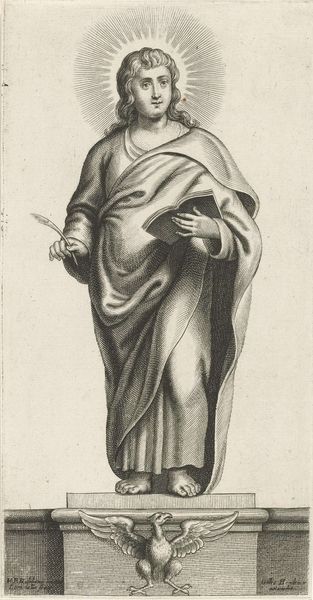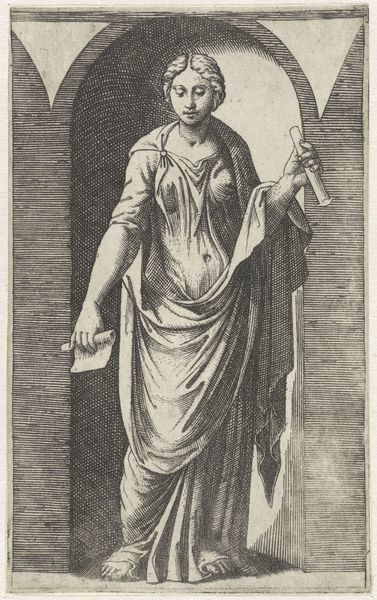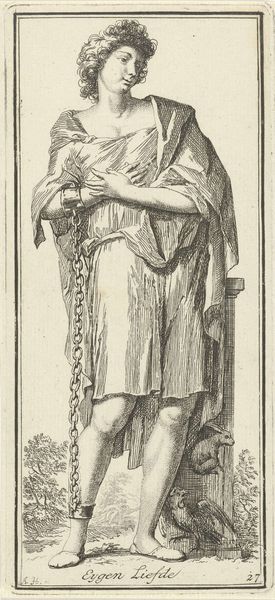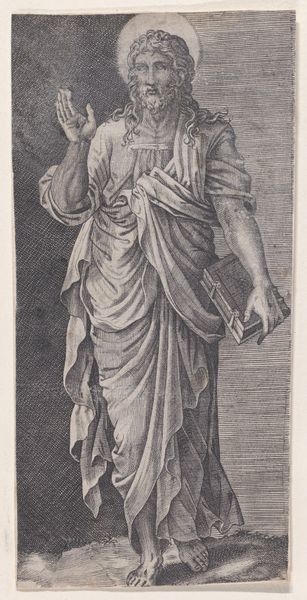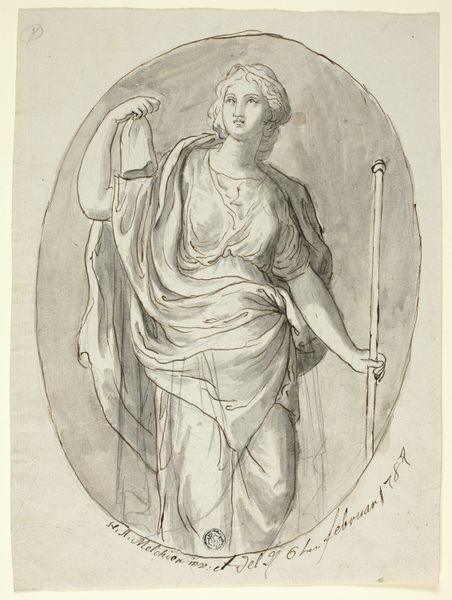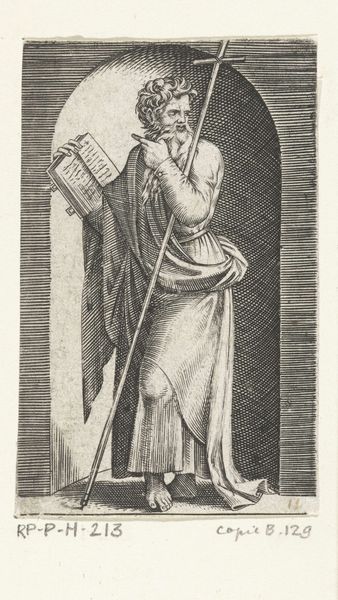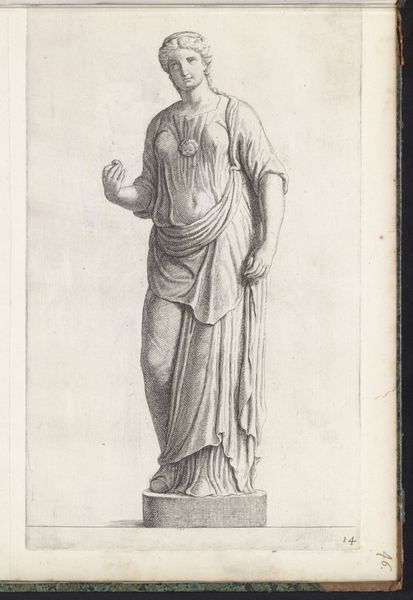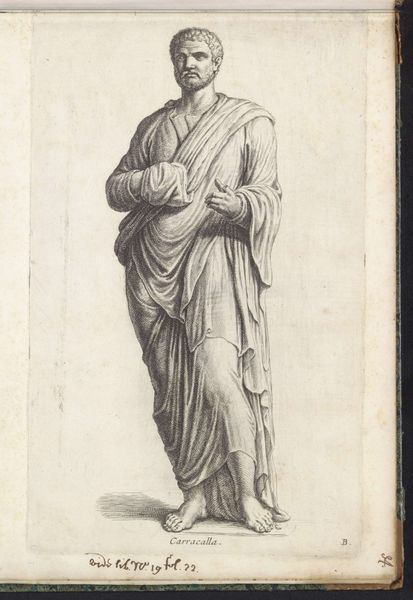
Beeld van Temperantia (Gematigdheid) op de achtergevel van het Stadhuis op de Dam 1663 - 1783
0:00
0:00
hubertquellinus
Rijksmuseum
print, engraving
#
pencil drawn
#
baroque
# print
#
pencil sketch
#
figuration
#
form
#
pencil drawing
#
line
#
history-painting
#
engraving
Dimensions: height 320 mm, width 141 mm
Copyright: Rijks Museum: Open Domain
Curator: Here we have an engraving titled “Beeld van Temperantia (Gematigdheid) op de achtergevel van het Stadhuis op de Dam,” or “Statue of Temperance on the rear facade of the Town Hall on the Dam,” created between 1663 and 1783, after a design by Hubert Quellinus. It’s a delicate print, currently part of the Rijksmuseum's collection. Editor: My first thought is "restraint." There’s something so calmly powerful about her posture, the drape of the robes and how gently the artist handled line-work here. It speaks to moderation, definitely. Curator: Indeed. Quellinus’ Temperantia, a visual representation of the cardinal virtue of temperance, embodies self-control. The figure relates to Dutch notions of civic responsibility that are inseparable from global trade networks, which can be chaotic, inequitable, and produce extreme moral and social implications for marginalized populations in colonized territories. The figure is laden with meaning relating to intersectional discourses of power, control, gender, and economic models in 17th-century Dutch society. Editor: Notice the bridle in her left hand and the water jug in her right—classic symbols that denote Temperance in art across various cultures and time periods. It’s interesting to me how such distinct symbols continue to appear. Curator: Precisely! These enduring symbols underscore the notion of curbing excess, the controlled mixing of water with wine, the guidance and constraint offered by a bridle. Temperantia here is not merely an abstract virtue; it's about the moderation necessary for the smooth functioning of the republic, a theme interwoven with discussions about Dutch expansionism. This work provides the opportunity for viewers to examine social consciousness alongside its historical conditions. Editor: It really is amazing how potent these images are, how quickly they transmit an idea—in this case, the virtue of temperance and restraint. I find myself pondering what restraint looks like in our world today and who is in a position to practice such virtue. Curator: A question definitely worth considering. Reflecting on representations of virtues offers a crucial tool for analyzing complex power dynamics within the political landscape. It's so relevant when navigating current geopolitical crises, the resurgence of nationalist parties, and their effect on economic policies globally. Editor: This has definitely given me something to think about today, not just about the image but what it stands for culturally, its potency as an icon, its symbolism throughout time, and its importance to Dutch consciousness in the seventeenth century.
Comments
No comments
Be the first to comment and join the conversation on the ultimate creative platform.
